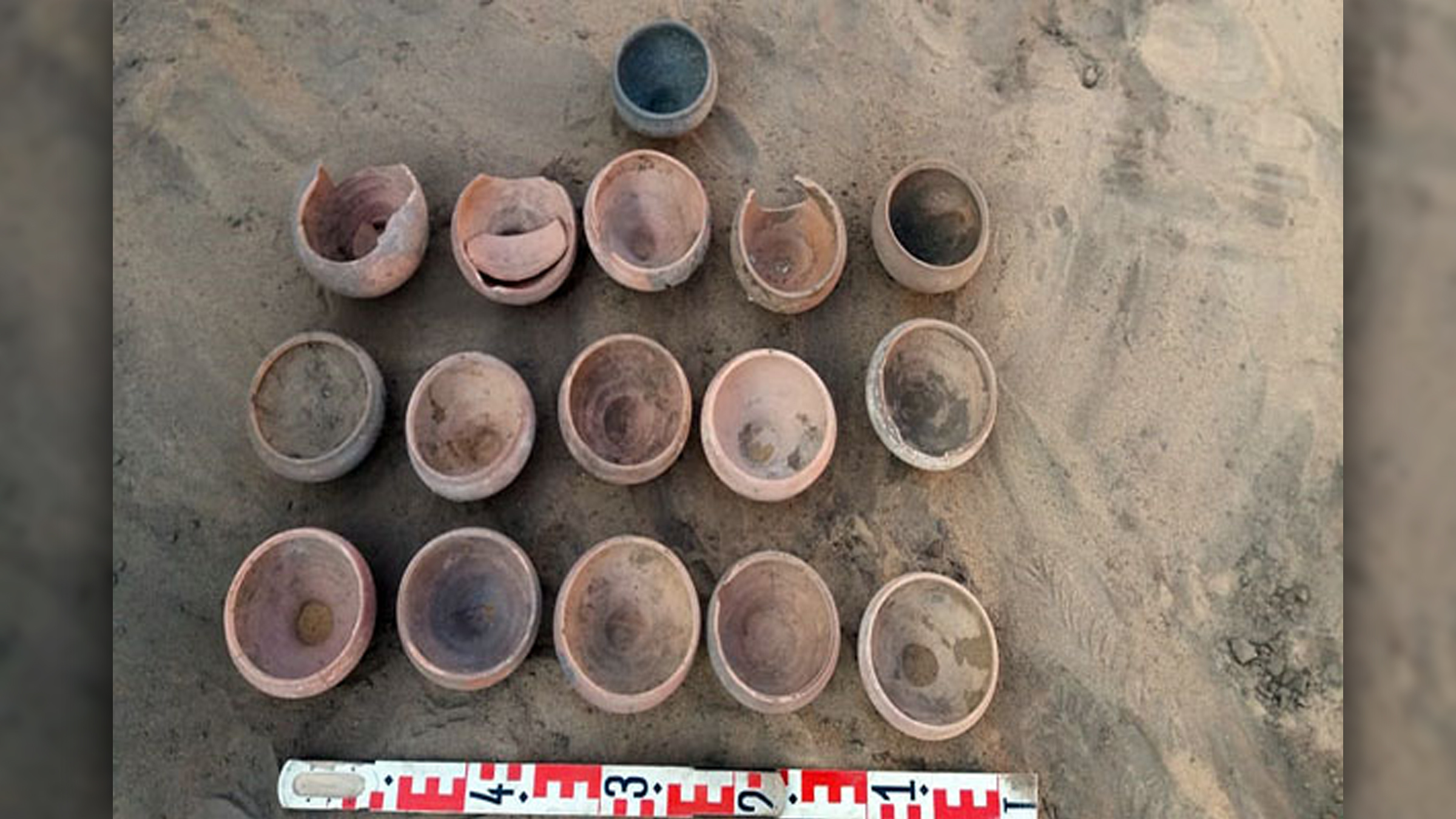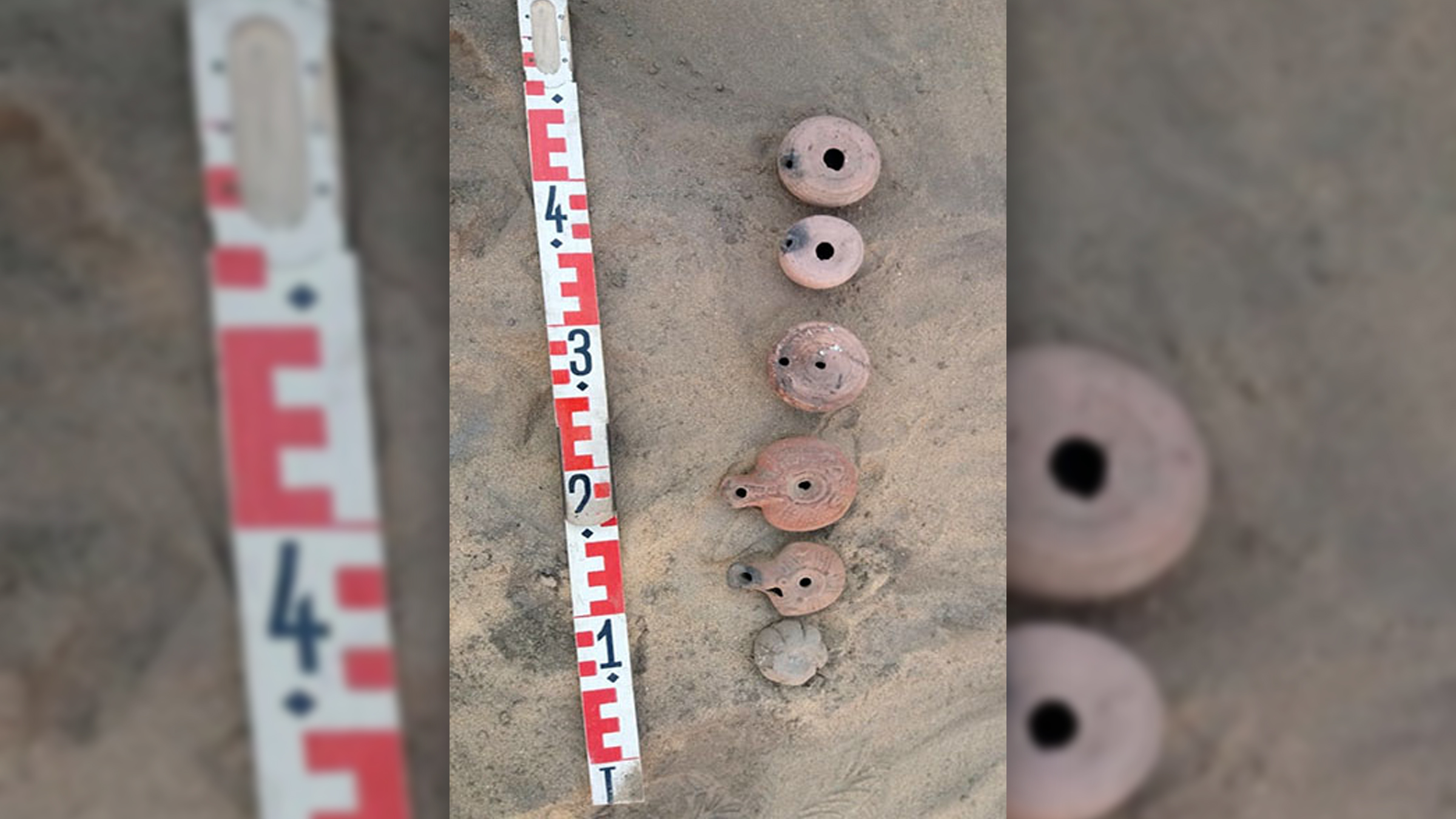Ruins of ancient church and temple discovered in Egypt
The church dates back to the early Coptic era.

Archaeologists in Egypt have unearthed the remains of a Ptolemaic period temple, a Roman fort and an early Coptic church, according to the Egyptian Ministry of Tourism and Antiquities.
The church was built in the ruins of the Roman fort, which was found at an archaeological site known as Shiha Fort, in the Aswan governorate in southern Egypt, the ministry announced in a Jan. 18 statement.
The temple dates to the Ptolemaic dynasty, which began about two decades after Alexander the Great died in 323 B.C. and his general, Ptolemy I, took over the Egyptian part of Alexander's empire, and lasted until 30 B.C. The crumbling temple, also found at the site, was decorated with an unfinished sandstone panel that showcased a Roman emperor, according to the Egyptian Ministry of Tourism and Antiquities' Egyptian archaeological mission, which conducted the excavations.
Related: Photos: 2,000-year-old tombs found in Egyptian oasis
Although the temple's panel is incomplete, archaeologists could see that it depicted the entrance of a temple. In the engraved scene, a man who looks like a Roman emperor stands next to an altar featuring an unknown deity on top of it, the archaeologists said.
The temple had four sandstone blocks decorated with palm frond carvings, according to Mostafa Waziri, secretary-general of the antiquities ministry. In the temple, archaeologists also found an inscription written in hieratic script (the local cursive writing system used in ancient Egypt) about a Greek emperor, as well as carvings showing cartouches (Egyptian hieroglyphs carved into a vertical oval engraving) of the Ptolemaic kings.

Archaeologists have known about this site in Aswan for some time; from 1920 to 1922, German archaeologist Hermann Junker uncovered part of it, according to Mohamed Abdel Badie, head of the Central Administration for Antiquities of Upper Egypt. However, the excavation was never finished.
Sign up for the Live Science daily newsletter now
Get the world’s most fascinating discoveries delivered straight to your inbox.

The latest work has shed more light on the early Coptic church built there. The Coptics, who make up about 10% of Egypt's population, are the descendants of a long line of ancient Egyptians who later converted to Christianity in the early first century, according to Encyclopedia Britannica.
The new excavations revealed that the church had a red brick vault and that a mud brick wall surrounding the holy building was larger than previously thought, with a width of nearly 7 feet (2.1 meters), Abdel Badie said in the statement.
The northern side of the church has four rooms, a long hall and a staircase. The southern side has kilns that were used to bake pottery, and stone tiles were found on the eastern side.
Originally published on Live Science.

Laura is the archaeology and Life's Little Mysteries editor at Live Science. She also reports on general science, including paleontology. Her work has appeared in The New York Times, Scholastic, Popular Science and Spectrum, a site on autism research. She has won multiple awards from the Society of Professional Journalists and the Washington Newspaper Publishers Association for her reporting at a weekly newspaper near Seattle. Laura holds a bachelor's degree in English literature and psychology from Washington University in St. Louis and a master's degree in science writing from NYU.










